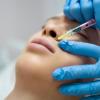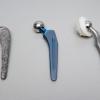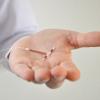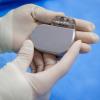Medical devices are products which are covered by the Medical Devices Act. In practice, this comes down to all the equipment, software and consumables which are used in healthcare, with the exception of medicines. The National Institute for Public Health and the Environment (RIVM) performs laboratory and desk research (eg. literature research and reviews of manufacturers’ product files) for medical devices, with patient safety as the primary focus.
Medical devices are products which are used for the prevention, diagnosis, treatment and monitoring of a disease or disability. Examples range from surgical instruments and high-tech equipment like MRI scanners to accessories or software which are needed for the correct use of a medical device.
Four classes
Medical devices are divided into four classes, namely class I, IIa, IIb and III. The higher the risk of problems with a medical device leading to unsafe situations for the patient, the higher the class to which the medical device is assigned. The requirements are stricter for medical devices of a higher class compared to those in a lower class. Examples of medical devices are wheelchairs and plasters (class I), MRI scanners (class IIa), dialysis systems (class IIb) and hip implants (class III).
Role of RIVM
RIVM carries out different activities with respect to medical devices. Our main focus is on high-risk medical devices. Patient safety is the primary focus of our activities. RIVM conducts both laboratory and desk research. The latter consists of, for example, literature research and reviews of manufacturers’ product files. RIVM also takes part in national and international committees related to medical devices where it contributes from the perspectives of both content and strategy. This work is usually commissioned by other government institutions like the Ministry of Health, Welfare and Sport (VWS) and the Health Care Inspectorate (IGZ). VWS determines policy on medical devices and the IGZ monitors the medical devices. RIVM supports both VWS and IGZ in their activities.
Reporting centre for adverse effects of medical implants
Did you know that implants can have adverse effects? If you think that your health problems are caused by an implant, you can report this to the Reporting centre for adverse effects of medical implants.
An implant is a medical device that is placed in the body for a long time for medical or cosmetic reasons. Just like medication, an implant can cause adverse effects. Patients and health care providers can report health problems due to implants to the Reporting centre for adverse effects of medical implants (MEBI). By receiving reports, the MEBI can identify potential adverse effects of implants at an early stage. It is important that we monitor the safety of implants. That is why we keep an eye on the possible adverse effects. The sooner we know these effects, the better.








